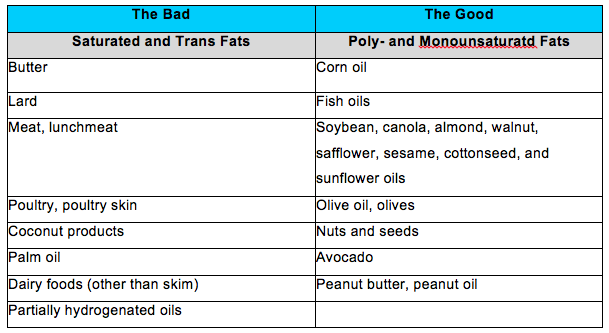By Iris Farrou
05 Oct, 2022
Diet & Exercise, Lifestyle Tips, Menopause, Nutrition, Peri-Menopause, Peri-Menopause, Prevention, Queer Health, Women's Health, Young adults & teens
Bone Density, Bone Health, Calcium Deficiency, Importance of a Healthy Diet for Young Women, Nutrient Absorption, Nutrition for women, Osteoperosis, Peri-Menopause Health, Preventing Osteoporosis, Womens Nutrition

You may have heard the occasional old person complain about their bones hurting when the
weather turns, or struggle to eliminate chronic back and joint pain. Though there can be many
reasons for this, one of the most common is the silent disease of osteoporosis: it causes bones to
weaken and turn brittle and fragile. As such, the risk of broken bones or fractures is significantly
increased.
Unfortunately, if you’re not regularly tested for osteoporosis you may not even be able
to tell you have this disease until a seemingly minor accident leaves you with a broken bone…
How to Diagnose
The later stages of osteoporosis come with several symptoms, such as back pain, stooped
posture, minor fractures, and loss of height. You can, however, be proactive about osteoporosis
before you suffer those symptoms or a broken bone (seemingly out of nowhere!). The easiest
way to keep tabs on osteoporosis is a bone density test. Imagine osteoporosis turning your strong
bones into sponge-like structures. Bone density tests help compare your bone density to the
average bone density of a healthy, young, US-based woman. They are officially called Bone
Mineral Density (BMD) tests, and resemble an X-ray but with less radiation exposure. The BMD
results, along with other health factors taken into consideration, estimate your risk of having a
bone fracture in the next decade.
Getting Tested
As osteoporosis may creep up on you, it is recommended to get tested if you are a woman of
menopausal age with osteoporosis risk factors, or a woman over the age of 65. If you are under
65 but have a family history of osteoporosis and are postmenopausal, you should also get tested.
Breaking a bone after age 50 is also a good indicator you should get tested for osteoporosis.
If you have already been diagnosed with osteoporosis, and are even taking medications for it,
you may want to repeat BMD tests every couple of years. If you are switching osteoporosis
medications, it is likely that your medical professional will recommend you get tested.
Preventing Osteoporosis
There are several risk factors for osteoporosis, including age, sex, race and family history.
Women are at a greater risk for osteoporosis, as are all people as they get older. If you are white
or of Asian descent, you may also be at a higher risk. Some factors that can be controlled are low
sex hormones, excessive thyroid hormone, and other overactive parathyroid or adrenal glands.
Low calcium intake puts you at a greater risk of developing osteoporosis, as it contributes to
decreased bone density. Eating disorders or being severely underweight do the same, as they can
weaken bones in both men and women. Gastrointestinal surgery can also have a negative impact
on your bone density, as this type of surgery limits the available surface area of your body to
absorb nutrients, including calcium.
https://www.everydayhealth.com/osteoporosis/guide/symptoms/
https://www.mayoclinic.org/diseases-conditions/osteoporosis/symptoms-causes/syc-20351968
More

Fat free diets. Fat free foods. For years, fat free fanatics have suffered from fat free mania, desperately trying to avoid any fat in their diets out of a belief that a fat free lifestyle is a guaranteed weight loss strategy. What many fat fearing dieters may not realize, however, is that our bodies need a healthy level of fat in order to maintain overall wellness. As a matter of fact, The United States Department of Agriculture recommends that adults get 20 – 35 percent of their total calories from fats. Fats provide essential fatty acids, offer fat-soluble vitamins, and are an important source of energy. It’s important to understand that there are different types of fats, and that some are healthier for you than others. Instead of trying to live a completely fat-fee lifestyle, simply knowing the different sources of good and bad fats, and what constitutes a healthy amount of each, can truly help you meet your weight loss goals.
The Good
Unsaturated fats are considered good fats. They include polyunsaturated fatty acids and monounsaturated fats. When eaten in moderation, our bodies use mono- and polyunsaturated fats to replace unhealthy fats, such as saturated or trans fats, a process that can help lower cholesterol and reduce our risk of heart disease. Omega-3 fatty acids are a specific type of good fat that offer healthy benefits for our hearts. Found in fatty fish such as salmon, trout, catfish, and mackerel, as well as flaxseeds and walnuts, The American Heart Association recommends eating two servings of these polyunsaturated fats each week, preferably in the form of fatty fish. While omega-3 supplements are available, it is healthiest to obtain the nutrient from food sources, rather than from vitamin supplements.
Monounsaturated fats are another form of good fat that can help prevent heart disease. Most commonly found in olive oil, avocados, hazelnuts, almonds, Brazil nuts, cashews, sesame seeds, pumpkin seeds, canola, oil and peanut oil, these healthy fats are a good source of vitamin E.
The Bad
Saturated and trans fatty acids are the unhealthy fats that should only be eaten sparingly. These bad fats can raise cholesterol levels, clog arteries, and increase the risk of heart disease, colon cancer, and prostate cancer. Saturated fats are most commonly found in animal products such as meat, poultry skin, high-fat dairy and eggs, and some vegetable fats such as coconut and palm oils.
Trans fats come in two forms: the kind that is naturally occurring and can be found in small amounts in some dairy and meat, and the kind that is artificial and that occurs when liquid oils are hardened into “partially hydrogenated” fats.
The Ugly
Artificial trans fats are having the greatest negative impact on the average American diet. Typically used in the preparation of fried foods, baked goods, cookies, icings, crackers, and packaged snack foods, experts warn that artificial trans fats are even more detrimental to our health than butter or lard. Even small amounts of artificial trans facts can increase our risk of heart disease.
Still confused? Use the chart below to identify good and bad fats so that you can incorporate the proper amounts of each in your healthy diet:

More



